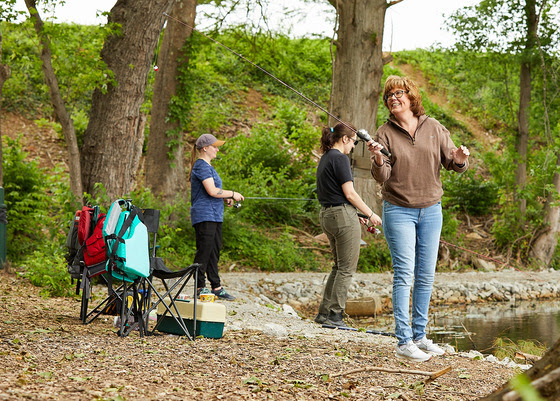Become a Kentucky Wild member and support statewide conservation efforts
Published 8:00 am Friday, July 19, 2024

- 2024-25 fishing and hunting licenses are now available in Kentucky. (Kentucky Department of Fish and Wildlife Resources photo)
|
Getting your Trinity Audio player ready...
|
While the Kentucky Department of Fish and Wildlife Resources relies upon the support of its constituents, purchasing a license isn’t the only way to support its crucial statewide conservation mission.
With a focus on Kentucky’s more vulnerable critters that aren’t hunted, trapped or fished, the department’s Kentucky Wild program supports further research toward at-risk species.
Membership dues to Kentucky Wild help pay for various conservation efforts around the state. In turn, members have the chance to take a behind-the-scenes look at current research work through the Kentucky Wild Member Experiences program.
Trending
“Kentucky Wild members are given a front row seat to view conservation in action,” said Geoff Roberts, program coordinator for Kentucky Wild.
Non-game species make up 90% of Kentucky’s fauna. Currently, more than 527 native animals, fishes, insects and plants are listed as Species of Greatest Conservation Need (SGCN) in the state. Biologists know that inaction could result in the statewide extirpation, or regional loss, of many of those species.
“We want to give members an exclusive look at the conservation projects and initiatives that their membership is supporting,” Roberts noted.
Over the years, Kentucky Wild members have enjoyed a variety of experiences including monarch butterfly tagging, glitter-tagging freshwater mussels, songbird banding and herpetology hikes.
Proceeds from membership dues go toward projects such as habitat repair, research and survey equipment, additions of Motus (wildlife tracking) stations for songbird research and facility operations at the department’s Center for Mollusk Conservation, where biologists raise threatened and endangered freshwater mussels for release.
At their first Kentucky Wild event, Monticello resident Tom Chittum and his 10-year-old daughter Aubrey visited Minor Clark Fish Hatchery in Rowan County for mussel tagging and a close-up tour of eastern hellbender research operations.
Trending
“As a boy, I was endlessly fascinated by creatures like lizards and salamanders. Kentucky Wild is a way for me to continue supporting conservation and awareness of such non-game species as an adult. More importantly to me, though, it helps foster the budding biologist and field researcher in my daughter,” said Chittum, who also enjoys squirrel, deer and turkey hunting.



